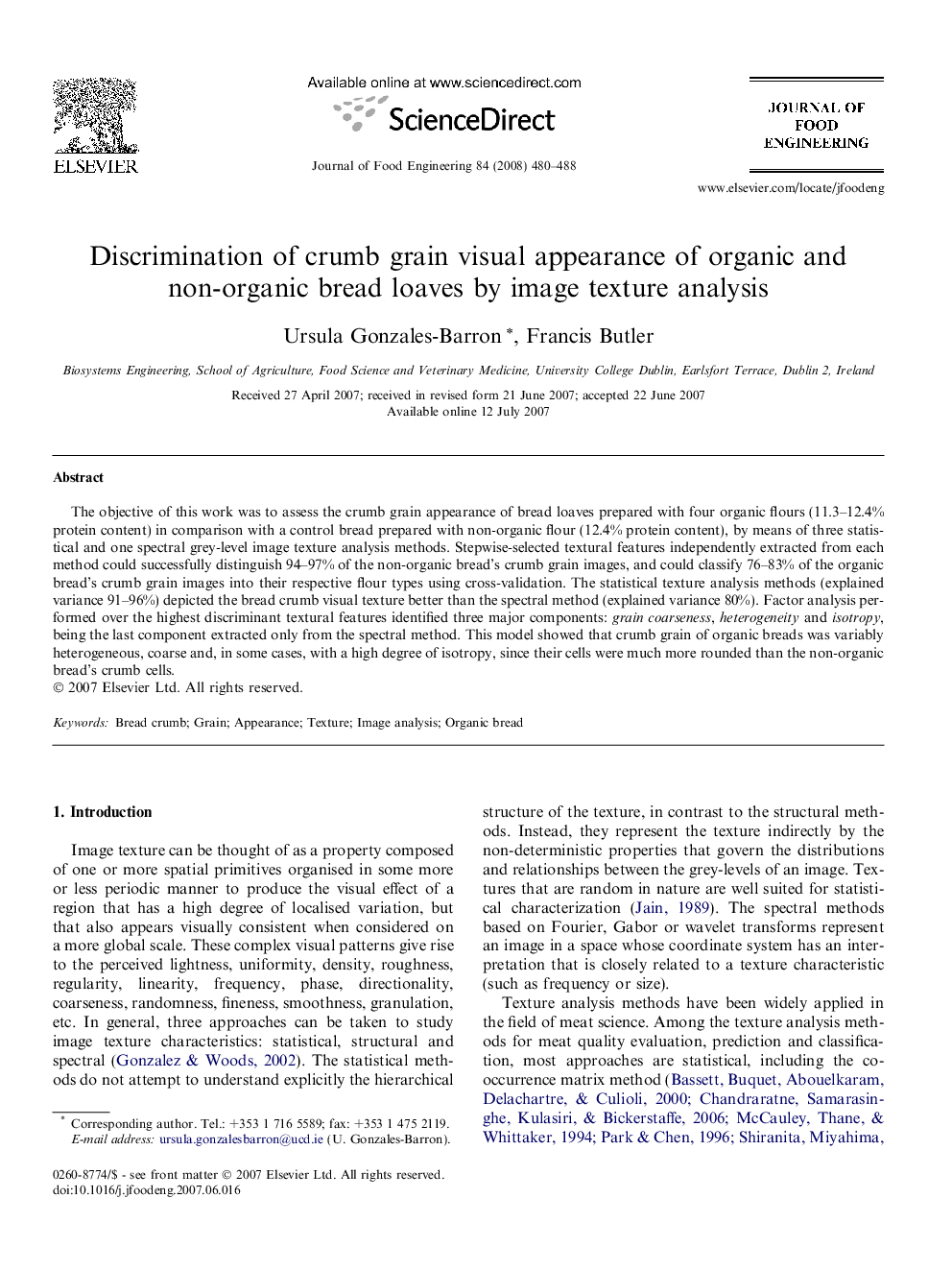| Article ID | Journal | Published Year | Pages | File Type |
|---|---|---|---|---|
| 225997 | Journal of Food Engineering | 2008 | 9 Pages |
The objective of this work was to assess the crumb grain appearance of bread loaves prepared with four organic flours (11.3–12.4% protein content) in comparison with a control bread prepared with non-organic flour (12.4% protein content), by means of three statistical and one spectral grey-level image texture analysis methods. Stepwise-selected textural features independently extracted from each method could successfully distinguish 94–97% of the non-organic bread’s crumb grain images, and could classify 76–83% of the organic bread’s crumb grain images into their respective flour types using cross-validation. The statistical texture analysis methods (explained variance 91–96%) depicted the bread crumb visual texture better than the spectral method (explained variance 80%). Factor analysis performed over the highest discriminant textural features identified three major components: grain coarseness, heterogeneity and isotropy, being the last component extracted only from the spectral method. This model showed that crumb grain of organic breads was variably heterogeneous, coarse and, in some cases, with a high degree of isotropy, since their cells were much more rounded than the non-organic bread’s crumb cells.
